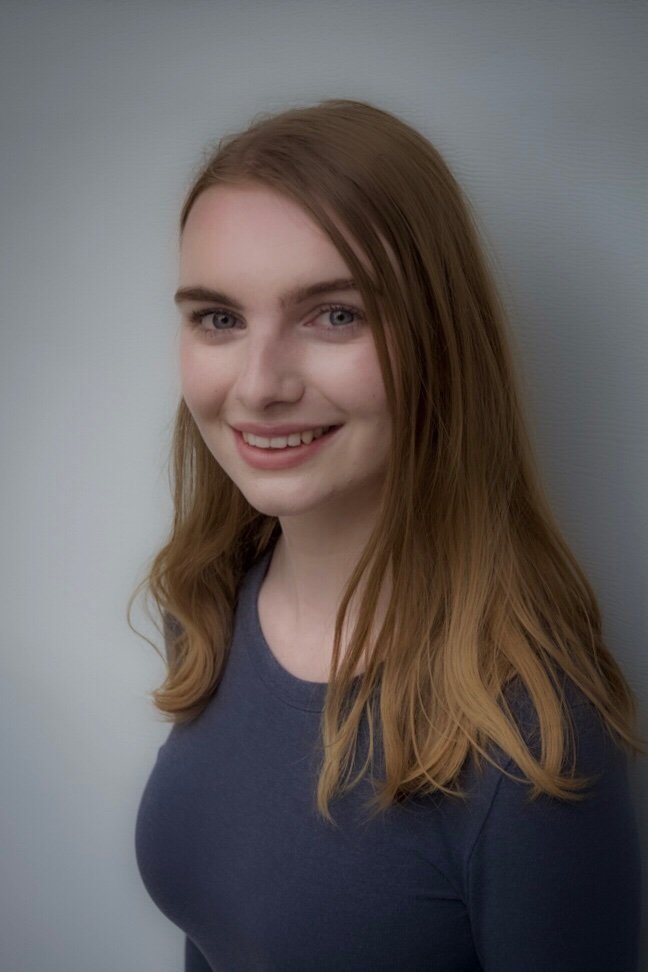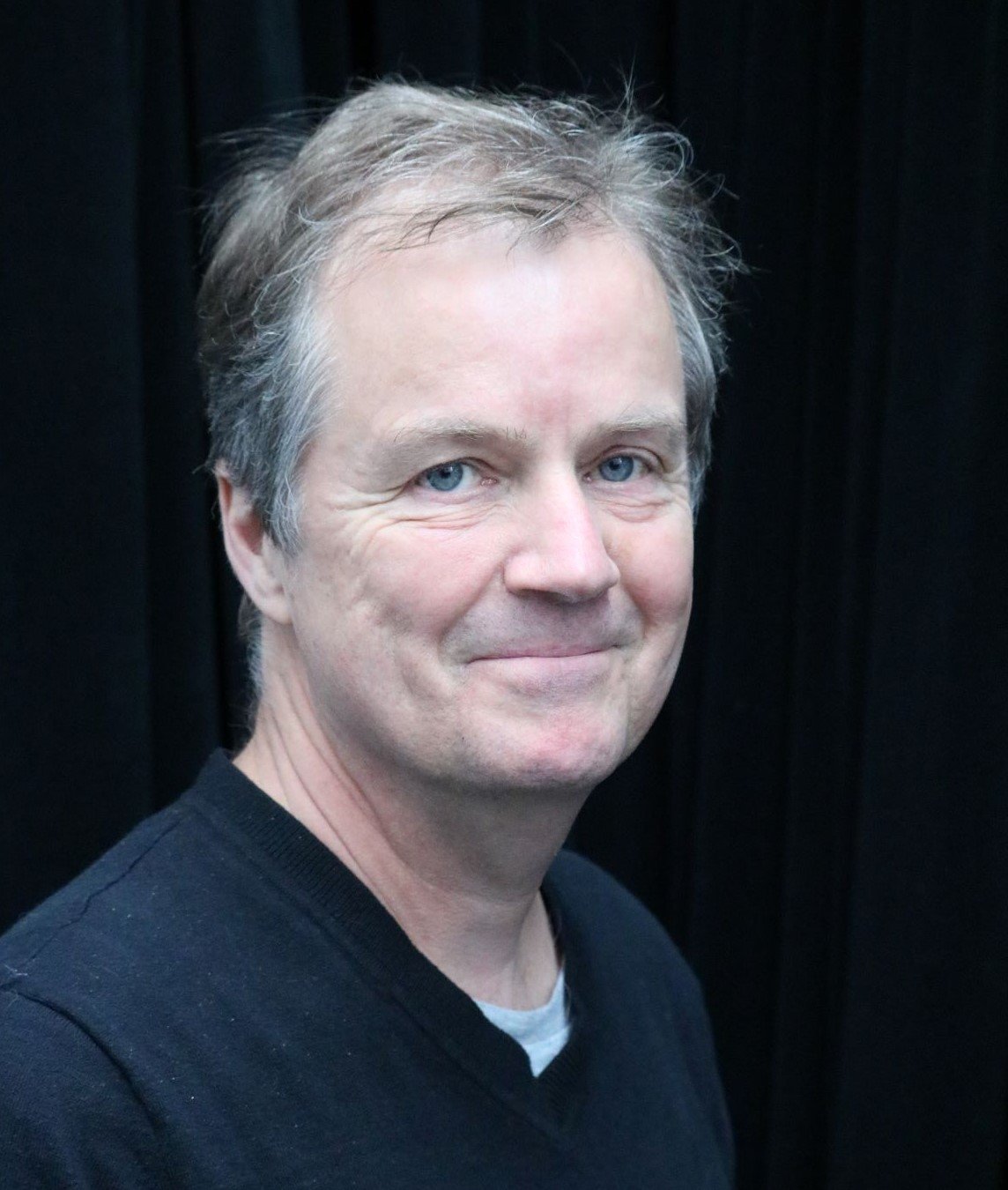(art) Song Lab 2024 is presented in partnership with the University of Manitoba’s Desautels Faculty of Music, and with financial support from the SOCAN Foundation.
Art Song Lab is an independent venture, funded entirely through participant fees, ticket sales, and the generosity of donors. Please consider adding a donation to your ticket purchases so we can continue to bring new life to art song in North America.
Contact sponsorship@artsonglab.com to become a donor today.
(art) Song Lab gratefully acknowledges the financial support of the SOCAN Foundation. Visit socanfoundation.ca for more information.
Concert Program
A Walk in the Woods at Night
Music by Aaron Price, text by JCCortens
Mel Braun, baritone and Laura Loewen, pianist
Click for Composer's Note
A Walk in the Woods at Night (2024) is a setting of texts by JCCortens written based on our conversations and collaborative journaling process for (Art)SongLab 2024. This collection has three movements (not individually titled).
Click for Poem


Star Chart
Music by David Miltreiger, text by K.I. Press
Mel Braun, baritone and Laura Loewen, pianist
Click for Composer's Note
For most of human history, we have enjoyed a universal and uninhibited ability to observe and marvel at the stars in the sky. Today, the great increase in satellite traffic (including a great many SpaceX Starlink satellites) threatens this ability. Stars and constellations are one of humanity's most ancient forms of communication; interfering with it is interfering with our humanity itself. “Star Chart” is a poem with form inspired by the curtal sonnet (but is not in pentameter). Because constellations form images you can read, the poem refers to letters of the alphabet—X and O. X's use is inspired by Elon Musk's association with the letter, while O accompanies it to anchor the end of each stanza. These letters are both companions (hugs and kisses) and combatants (tic-tac-toe). Their appearances and pronunciations also strongly contradict each other's. O can express many different emotions depending on delivery. X marks the spot on a map.
Click for Poem

Seiche (Lake Huron and the Moon)
Music by Aaron Addorisio, text by Kayt Burgess
Mel Braun, baritone and Laura Loewen, pianist
Click for Composer's Note
A seiche (say-sha) is a type of wave that emulates a tide but is generated by the large lake and its environment. Poet Kayt Burgess wanted to write a love poem that turns the well-trod love story between the moon and the oceans by looking at the behaviour of lakes, into a contemporary take of someone who maintains their independence or autonomy in the face of an especially charismatic partner.
Throughout the process of (art)SongLab, we’ve explored the differences between the characters of the moon and the lake music within this piece. It begins with a stillness of “moon music” and transitions to the rolling tides of the “lake music” in the piano. These themes continue to develop in independent ways, and also convene together - firm in their independence but stronger together. - AA & KB
*A bore is a tidal event where part of a tide surges up a river, pushing it the opposite way.
Click for Poem

Paper Towel Cape
Music by Margaret King, text by Sarah Mercer
Caroline Barata, soprano and Alison d’Amato, pianist
Click for Program Note
The text is based on my real-life experience—literally and symbolically, in tandem. – Sarah Mercer
Click for Poem

Yearnings
Music by Patrick McGraw, text by Celeste Nazeli Snowber
Katherine Petersen, soprano and Alison d’Amato, pianist
Click for Composer's Note
This song was created in a collaborative effort as part of (Art) Song Lab 2024. It grew out of conversations between myself and the writer as we talked about our shared challenges in finding the time, strength and energy to create.
– Patrick McGraw
Click for Poem

East Window
Music by Gina Friedrich, text by K.I. Press
Lynne McMurtry, contralto and Rachel Kiyo Iwaasa, pianist
Click for Composer's Note
“East Window” reflects on the concept of time and how we often remember the past as a specific place. This piece begins slowly and grows more intense as time moves faster and the past becomes farther away. While the voice and the piano often move at similar rates at the beginning of the song, the piano starts to separate from the voice as the right hand begins to move more quickly. As the past becomes less tangible in the text, the heartache in the voice can be heard through the soaring high notes and melismas. The piano part becomes more intense as the past moves farther away, conveying the panic that time is speeding up. Near the end of the piece, the text begins to come to a place of tentative acceptance, resulting in the voice and piano slowing down and coming together again.
Click for Poem


Pantoum for a Dying Dog
Music by Nathan Wright Bueno de Mesquita, text by JCCortens
Lynne McMurtry, contralto and Rachel Kiyo Iwaasa, pianist
Click for Composer's Note
Pantoum for a Dying Dog is a setting of a text of the same name by JCCortens. The pantoum is a poetic form in which the second line of each stanza is reused as the first line of the next stanza. Each of the unique lines is repeated once throughout the poem. In this setting, each unique line has been assigned a melody, and when that line returns so does its melody. When the lines return however, they are often varied in some way, as is the melodic material. The poem seems to depict the narrator wandering while thinking back on memories of his dog who has died. The song seeks to capture the somber and wandering atmosphere of the poem.
Click for Poem

who art in heaven
Music by Owen Bloomfield, text by Jess Woolford
Lynne McMurtry, contralto and Rachel Kiyo Iwaasa, pianist
Click for Composer's Note
who art in heaven is an interpretation of the biblical creation story through the eyes of a young girl. Within the poem, we hear the voice of God/Father and the narrator/Eve. The feminist and child-like lenses placed on this well-known story create a real challenge to conventional readings. The music develops themes and gestures around the characters and follows the poem’s journey from innocence to disruption to self-actualization.
Click for Poem

Star Chart
Music by David Miltreiger, text by K.I. Press
Taylor Burns, soprano and Laura Loewen, pianist
Click for Composer's Note
For most of human history, we have enjoyed a universal and uninhibited ability to observe and marvel at the stars in the sky. Today, the great increase in satellite traffic (including a great many SpaceX Starlink satellites) threatens this ability. Stars and constellations are one of humanity's most ancient forms of communication; interfering with it is interfering with our humanity itself. “Star Chart” is a poem with form inspired by the curtal sonnet (but is not in pentameter). Because constellations form images you can read, the poem refers to letters of the alphabet—X and O. X's use is inspired by Elon Musk's association with the letter, while O accompanies it to anchor the end of each stanza. These letters are both companions (hugs and kisses) and combatants (tic-tac-toe). Their appearances and pronunciations also strongly contradict each other's. O can express many different emotions depending on delivery. X marks the spot on a map.
Click for Poem

Seiche (Lake Huron and the Moon)
Music by Aaron Addorisio, text by Kayt Burgess
Melanie Hiepler, soprano and Laura Loewen, pianist
Click for Composer's Note
A seiche (say-sha) is a type of wave that emulates a tide but is generated by the large lake and its environment. Poet Kayt Burgess wanted to write a love poem that turns the well-trod love story between the moon and the oceans by looking at the behaviour of lakes, into a contemporary take of someone who maintains their independence or autonomy in the face of an especially charismatic partner.
Throughout the process of (art)SongLab, we’ve explored the differences between the characters of the moon and the lake music within this piece. It begins with a stillness of “moon music” and transitions to the rolling tides of the “lake music” in the piano. These themes continue to develop in independent ways, and also convene together - firm in their independence but stronger together. - AA & KB
*A bore is a tidal event where part of a tide surges up a river, pushing it the opposite way.
Click for Poem

A Walk in the Woods at Night
Music by Aaron Price, text by JCCortens
Katherine Petersen, soprano and Laura Loewen, pianist
Click for Composer's Note
A Walk in the Woods at Night (2024) is a setting of texts by JCCortens written based on our conversations and collaborative journaling process for (Art)SongLab 2024. This collection has three movements (not individually titled).
Click for Poem


Intermission
Paper Towel Cape
Music by Margaret King, text by Sarah Mercer
Zorana Sadiq, soprano and Alison d’Amato, pianist
Click for Program Note
The text is based on my real-life experience—literally and symbolically, in tandem. – Sarah Mercer
Click for Poem

Yearnings
Music by Patrick McGraw, text by Celeste Nazeli Snowber
Zorana Sadiq, soprano and Alison d’Amato, pianist
Click for Composer's Note
This song was created in a collaborative effort as part of (Art) Song Lab 2024. It grew out of conversations between myself and the writer as we talked about our shared challenges in finding the time, strength and energy to create.
– Patrick McGraw
Click for Poem

fire works
Music by John Kuntz, text by Jess Woolford
Zorana Sadiq, soprano and Alison d’Amato, pianist
Click for Composer's Note
fire works is inspired by wildfires consuming everything in their path, not least the precious few north american summer months. Urgent and menacing, the music grows denser in its repetition until it breaks texture completely. the piece attempts to convey fire’s horrors, smoke’s infiltration, and feelings of panic and helplessness the climate crisis ignites.
Click for Poem

East Window
Music by Gina Friedrich, text by K.I. Press
Taylor Burns, soprano and Rachel Kiyo Iwaasa, pianist
Click for Composer's Note
“East Window” reflects on the concept of time and how we often remember the past as a specific place. This piece begins slowly and grows more intense as time moves faster and the past becomes farther away. While the voice and the piano often move at similar rates at the beginning of the song, the piano starts to separate from the voice as the right hand begins to move more quickly. As the past becomes less tangible in the text, the heartache in the voice can be heard through the soaring high notes and melismas. The piano part becomes more intense as the past moves farther away, conveying the panic that time is speeding up. Near the end of the piece, the text begins to come to a place of tentative acceptance, resulting in the voice and piano slowing down and coming together again.
Click for Poem


who art in heaven
Music by Owen Bloomfield, text by Jess Woolford
Melanie Hiepler, soprano and Rachel Kiyo Iwaasa, pianist
Click for Composer's Note
who art in heaven is an interpretation of the biblical creation story through the eyes of a young girl. Within the poem, we hear the voice of God/Father and the narrator/Eve. The feminist and child-like lenses placed on this well-known story create a real challenge to conventional readings. The music develops themes and gestures around the characters and follows the poem’s journey from innocence to disruption to self-actualization.
Click for Poem

Pantoum for a Dying Dog
Music by Nathan Wright Bueno de Mesquita, text by JCCortens
Caroline Barata, soprano and Rachel Kiyo Iwaasa, pianist
Click for Composer's Note
Pantoum for a Dying Dog is a setting of a text of the same name by JCCortens. The pantoum is a poetic form in which the second line of each stanza is reused as the first line of the next stanza. Each of the unique lines is repeated once throughout the poem. In this setting, each unique line has been assigned a melody, and when that line returns so does its melody. When the lines return however, they are often varied in some way, as is the melodic material. The poem seems to depict the narrator wandering while thinking back on memories of his dog who has died. The song seeks to capture the somber and wandering atmosphere of the poem.
Click for Poem

fire works
Music by John Kuntz, text by Jess Woolford
Katherine Petersen, soprano and Alison d’Amato, pianist
Click for Composer's Note
fire works is inspired by wildfires consuming everything in their path, not least the precious few north american summer months. Urgent and menacing, the music grows denser in its repetition until it breaks texture completely. the piece attempts to convey fire’s horrors, smoke’s infiltration, and feelings of panic and helplessness the climate crisis ignites.
Click for Poem

































